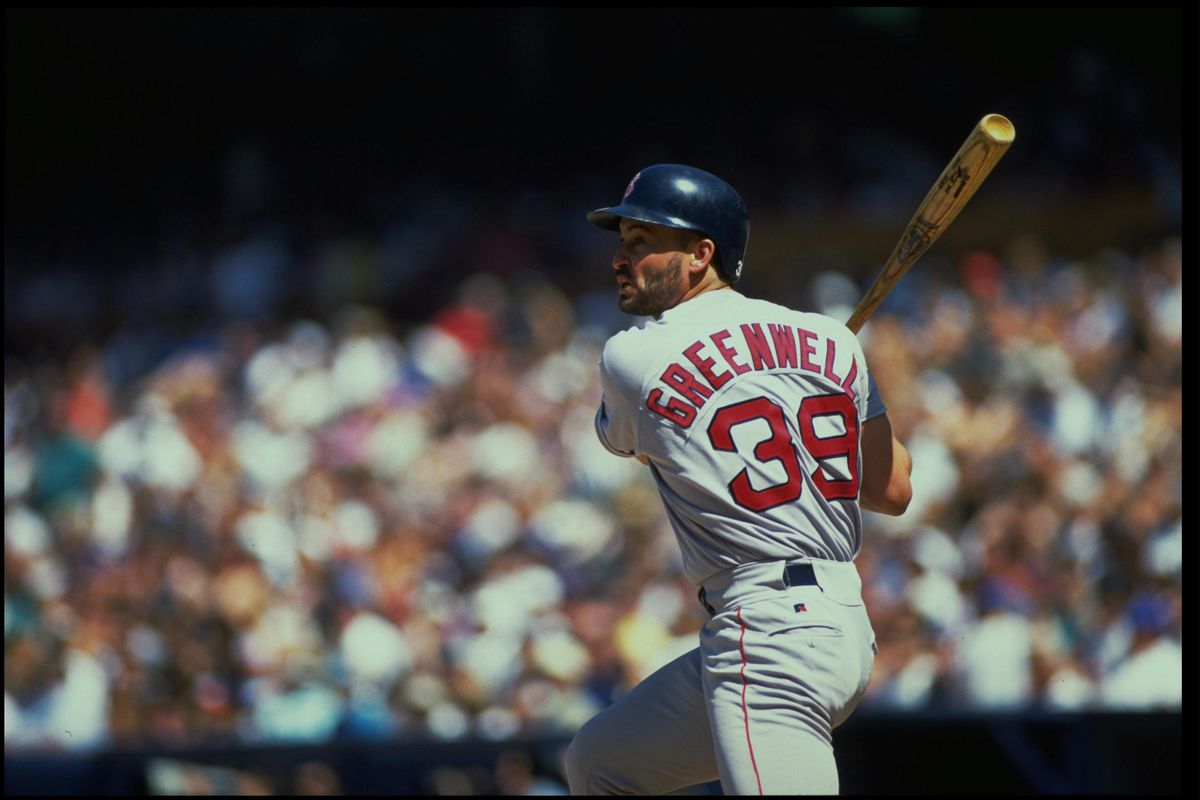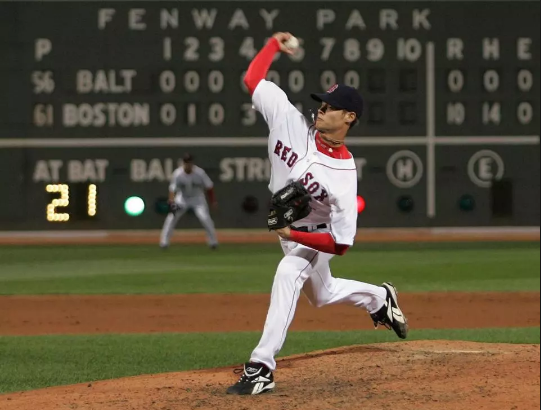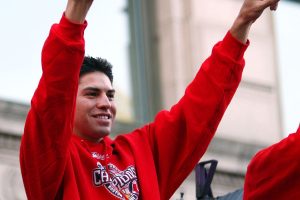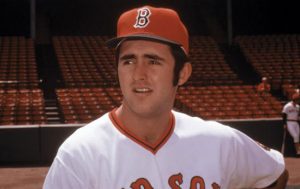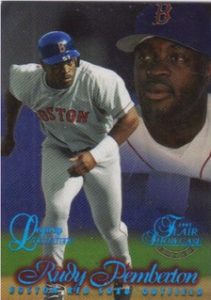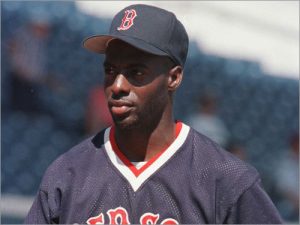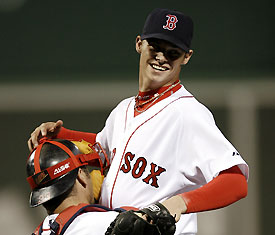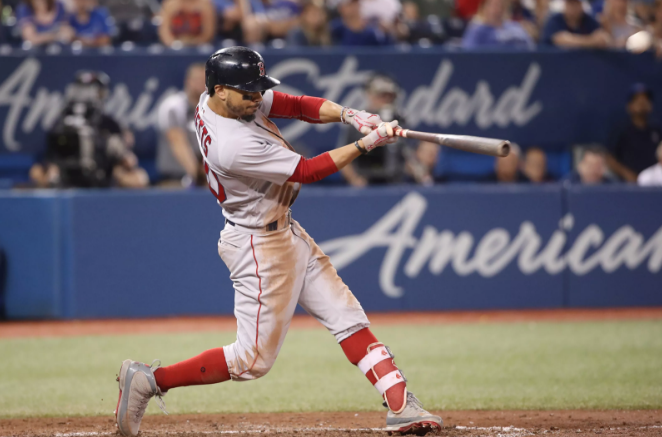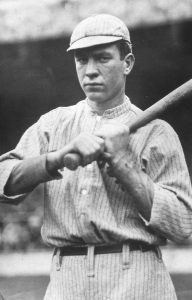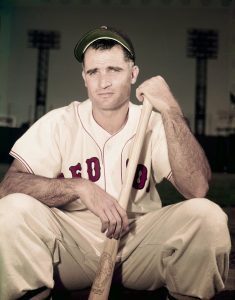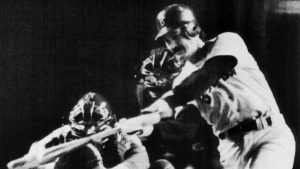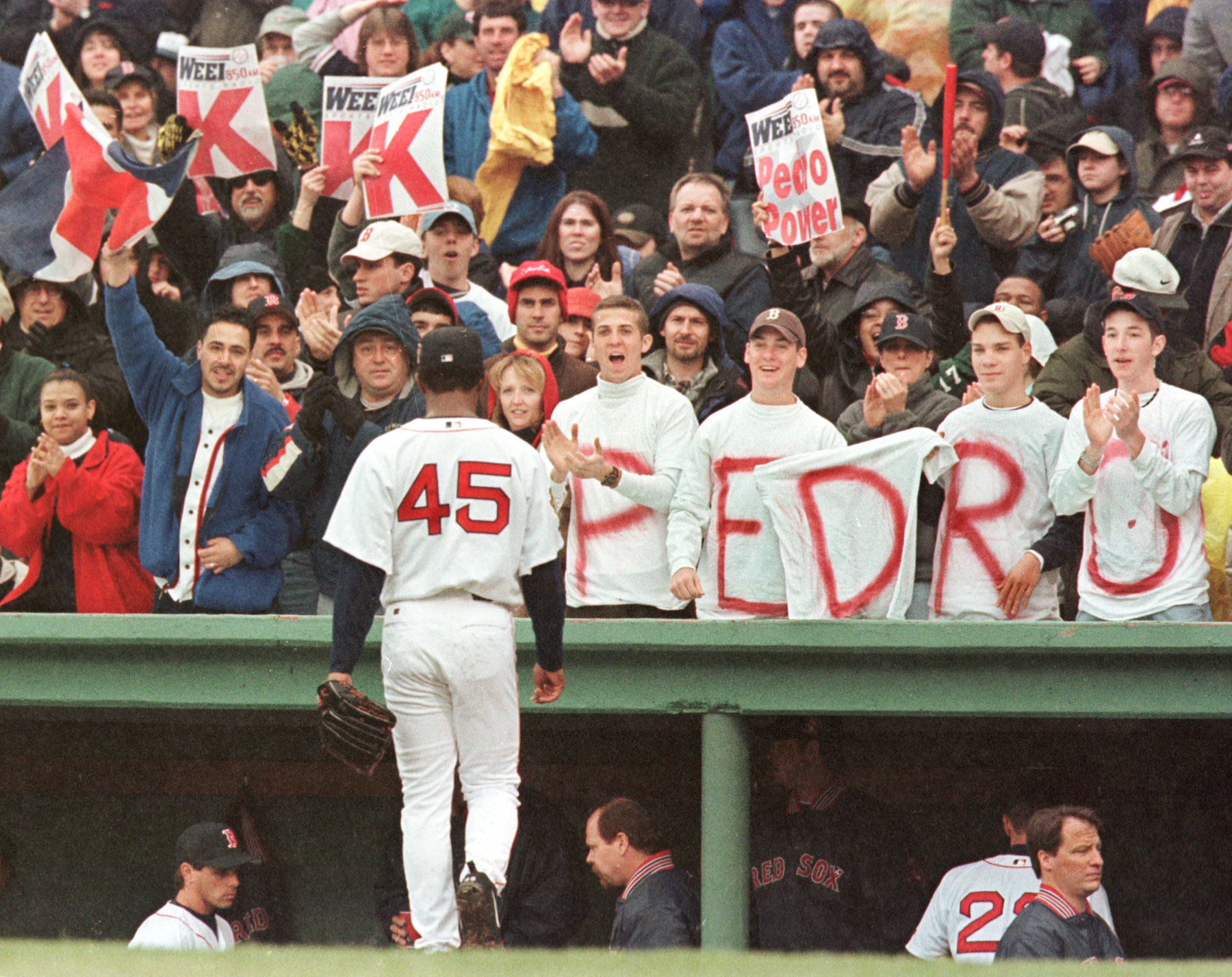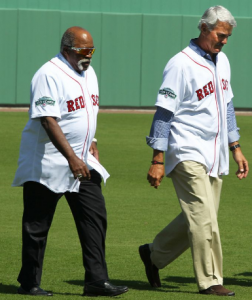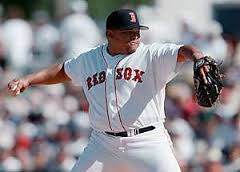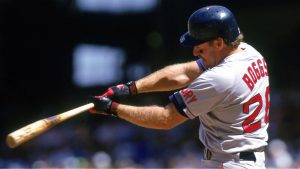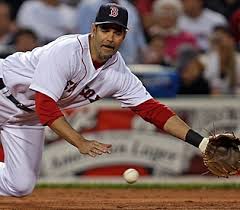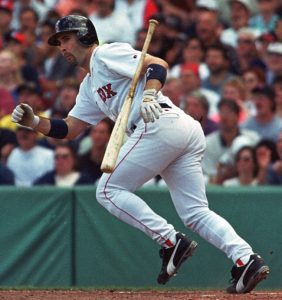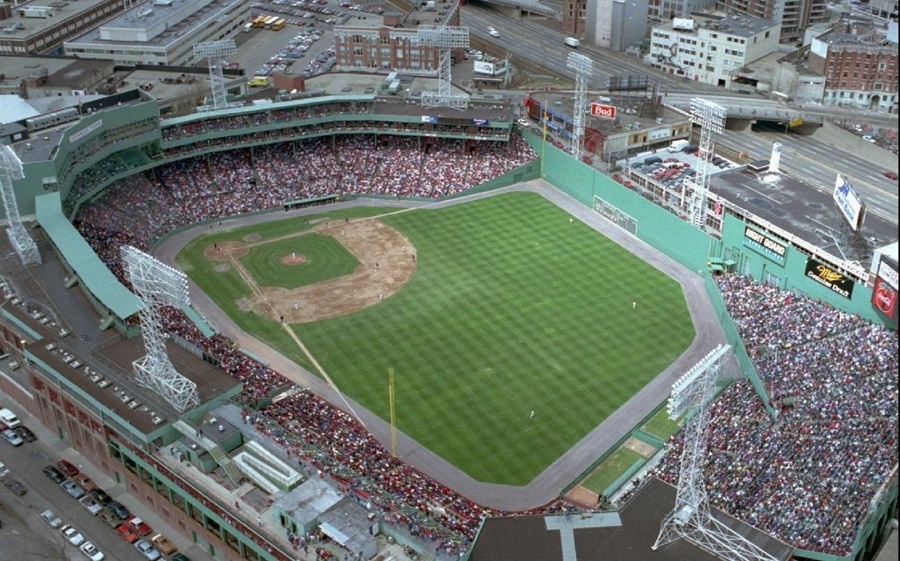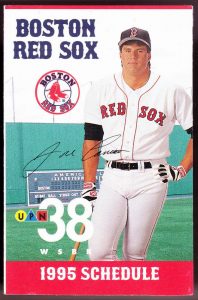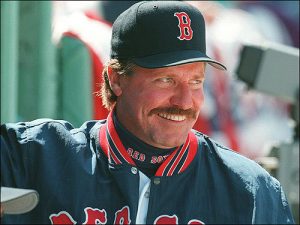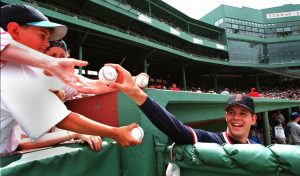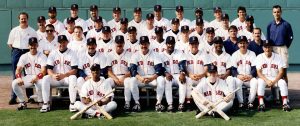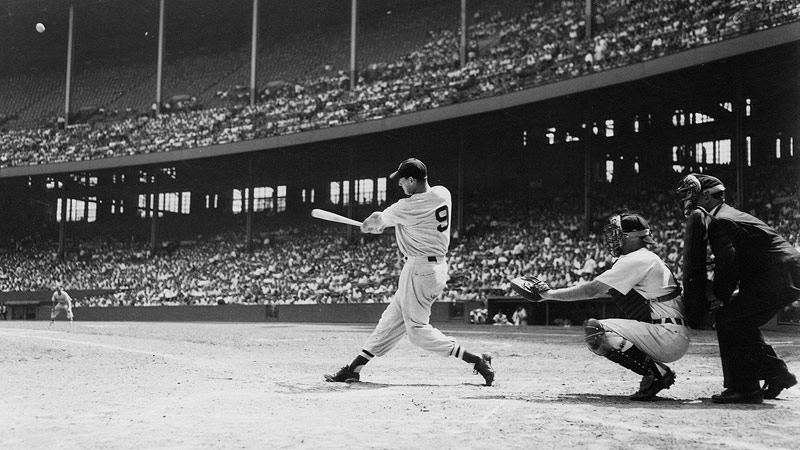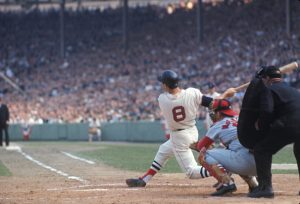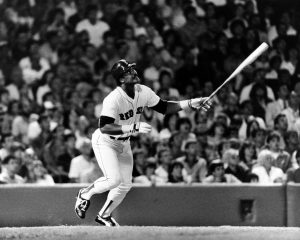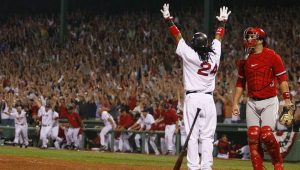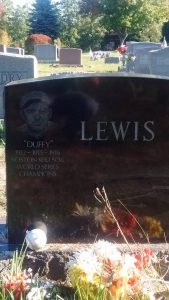The greatest Red Sox to wear the numbers 36-40 is next up in the series. Although as a group this one drops off a bit, there are still some good names here. One is a postseason hero, while another is the oldest player to win a professional game.
Number 36 – Tom Gordon
Tom Gordon wasn’t with the Red Sox a long time, nor was he always effective, but he did enough to be the choice at number 36. Gordon signed with the Red Sox as a starting pitcher for 1996. Despite a 12-9 record, Gordon was not effective, allowing more earned runs than any other pitcher in baseball. Gordon was pitching better the following season despite a 6-9 record, but was moved to the closer’s role following the epic trade of Heathcliff Slocumb. Gordon saved 11 games to close out the season.
1998 was Gordon’s signature season for the team. He made his first All-Star Game that year and led the league in saves. His 46 saves still stand as a Red Sox franchise record for one season. He was 7-4 with a 2.71 ERA and 1.01 WHIP in the fantastic year. He only blew one game, which came in Mid-April. The next season he extended his streak to 54 consecutive saves without blowing one, a Major League record. At the end of May he had a 2.08 ERA with 11 saves and zero blown saves. He blew back-to-back games in June and didn’t pitch again until the very end of the season. Gordon would have to undergo Tommy John surgery for a torn UCL.
Honorable Mentions: Junichi Tazawa, Aaron Sele, Mike Myers
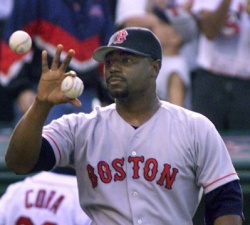
Number 37 – Bill Lee
The “Spaceman” gets the nod over Hideki Okajima for number 37. Both of them boast strong arguments. Lee pitched much longer and was an effective starting pitcher, so he’s my choice. He still plays baseball where he can find the opportunity, and in 2010 was the winning pitcher for the Brockton Rox, becoming the oldest person to ever win a professional baseball game.
Lee broke in with the Red Sox in 1969 and spent most of the seventies with the club. He started pitching mostly out of the bullpen, going 16-6 with a 2.95 ERA and 7 saves between 1971 and 1972. In 1973 he moved to the starting rotation and made the all-star team. He finished the year at 17-11 with a 2.75 ERA. This was the first of three consecutive seasons winning 17 games for “Spaceman.”
After a couple down seasons, Lee was having a bounce back year in 1978, when Don Zimmer inexplicably banished him to the bullpen as the team collapsed down the stretch. Lee pitched out of the bullpen three times in September, and never after September 10th. The move made zero sense, and may have helped aid the teams collapse. Lee finished the season with a 3.46 ERA over 24 starts and four relief appearances. He finished his Red Sox career with 94 wins.
Honorable Mentions: Hideki Okajima, Jimmy Piersall, Heath Hembree
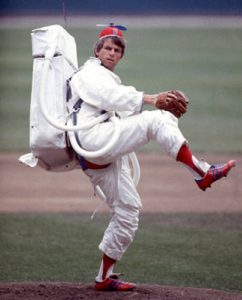
Number 38 – Curt Schilling
Curt Schilling was a huge acquisition for Theo Epstein and the Red Sox, and his presence paid immediate dividends. Schilling solidified himself as one of the all-time great postseason performers. He also seemed to wrap up his spot in Cooperstown while in Boston, but the writer’s association has yet to vote him in.
Schilling’s first season in Boston cemented him as a Red Sox hero, helping break the 86 year World Series drought. He led the American League with 21 wins, going 21-6 with a 3.26 ERA, 1.06 WHIP and 203 strike outs. He finished second in the Cy Young vote for the third time in four seasons. In the playoffs, he dominated as usual. After injuring his ankle in game one of the ALCS, Schilling famously had a surgery that temporarily allowed him to pitch, while putting off the main surgery until the offseason. On a hobble ankle, bleeding through his sock, Schilling returned for game six and allowed only one run over seven innings to pick up the win. The effort was heroic. In the World Series, Schilling allowed just an unearned run over six innings in Game 2 to pick up another win.
Schilling had difficulty recovering from his offseason surgery and struggled in 2005, even pitching out of the pen. In 2006 he was back to pitching 200 innings and winning 15 games. After a solid, yet unspectacular 2007, Schilling stepped up his game for the playoffs. He was 3-0 with a 3.00 ERA including another World Series victory in the postseason. Schilling finished his Red Sox career at 53-29 in the regular season, and 6-1 in the postseason.
Honorable Mentions: Jim Willoughby, Jeff Gray
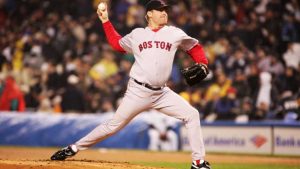
Number 39 – Mike Greenwell
Mike Greenwell was a fantastic player early in his career, and finished with a career .303 batting average. He homered four times in 31 at-bats during his first cup of coffee in 1985. As a rookie in 1987, Greenwell batted .328 with 19 home runs and a stellar .956 OPS. By the next year he was an MVP candidate.
1988 was “Gator’s” signature season. He finished second in the MVP vote to roided up Jose Canseco. Greenwell was red-hot during the summer months, finishing the season with a .325/.416./.531/.946 batting line, 22 home runs, 39 doubles and eight triples. He walked 87 times that year versus only 38 strike outs. Greenwell made his first All-Star Game and won the Silver Slugger.
Greenwell was an all-star again in 1989, batting .308 and driving home 95 runs. Greenwell remained a good hitter until the end, but never hit for the power he did in his first two seasons. He rebounded from an injury-plagued 1992 to bat .315 with 38 doubles in 93 games. He battled a bad back and injuries the rest of his career, which came to an end after the 1996 season despite a .295 average. He had one huge final game that season, hitting two home runs and driving in all nine Red Sox runs in a 9-8 victory over Seattle in September.
Honorable Mention: Jarrod Saltalamacchia
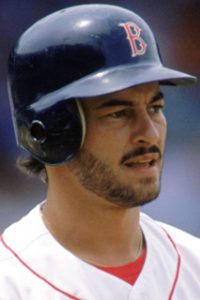
Number 40 – Rick Wise
Rick Wise had a nice career, but that was mostly with Philadelphia. He pitched a no-hitter with the Phillies and homered twice in the same game! It wasn’t the last time he would hit two home runs in a game either.
Wise came to the Red Sox in 1974, and had a shortened season due to arm problems. He recovered to win 19 games in 1975. He also nearly had another no-hitter, losing one with two outs in the ninth inning against the Brewers. Wise was solid in 1976, going 14-11 with a 3.53 ERA.
1977 was his final season in Boston, going 11-5 despite a 4.77 ERA. He was then included in a trade to Cleveland to get Dennis Eckersley to Boston. Therefore, his impact for the Red Sox went beyond what he accomplished on the field with them. He finished his Red Sox career 47-32 over four seasons.
Honorable Mentions: Ken “Hawk” Harrelson, Billy Conigliaro, Erik Hanson
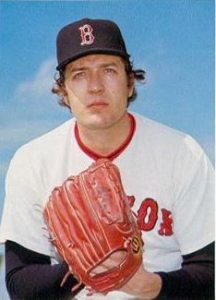
Featured picture from Lookout Landing
